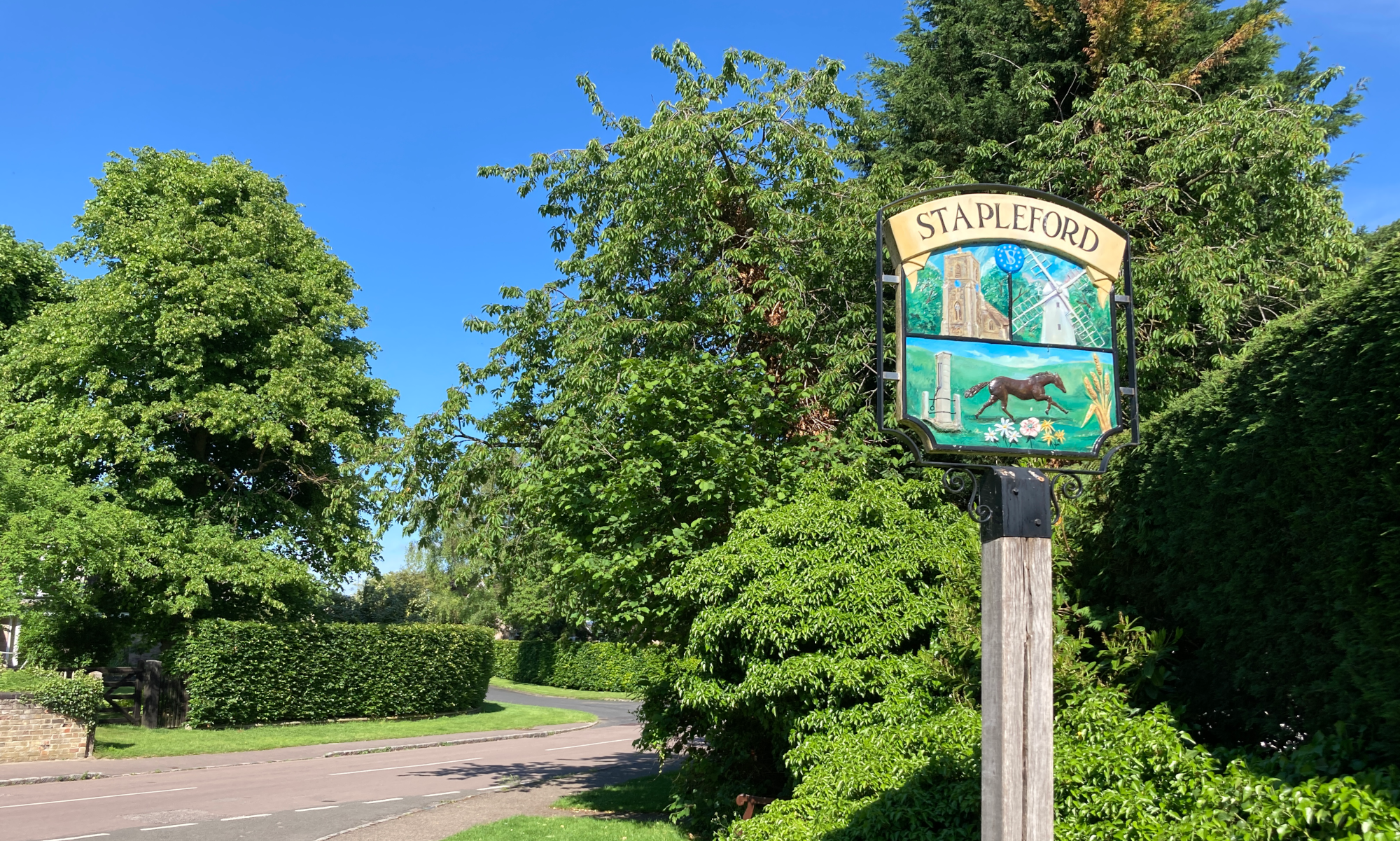Stapleford History Society 14th July 2022
Michelle Bullivant – A Tale of Discovery: The War Ditches
MANY of us, no doubt, have explored the quarry and nature reserve at the Cherry Hinton end of Lime Kiln Hill without giving the area much thought. Michelle Bullivant, our talented local landscape archaeologist, gave us a very interesting talk at our July meeting to reveal the centuries of history relating to the site.
It is well known that quarrying for clunch took place at the site and persisted until the 1980s. Peterhouse, the first Cambridge College, and Ely Cathedral were both built in part from it. However, our story begins in 1854 with the discovery of human remains while the reservoirs at the top of the hill were being dug. The eight skeletons were reputedly of eight giants, rather like Gog and Magog. However, there is no record of what happened to all the bones.
In 1893, when the owner of the site wanted to build a road there, another skeleton was discovered along with some Romano-British pottery. He belonged to the Cambridge Antiquarian Society so, when the ownership changed hands to another member of the CAS, a Mr Tebbit, more excavations took place. More skeletons, identified as male and female, were found together with animal bones and more fragments of pottery. The conclusion was that the site was probably Late Roman or Anglo Saxon. The skeletons were deposited in the School of Anatomy.
The University Digging Group took an interest in 1902 discovering more bones and pottery and also evidence of fires and ovens. A Romano-British brooch was also found. The theory began to emerge that the area had been part of a circular ditch like at Wandlebury and that such a circular fosse could possibly be Iron Age. In 1907 three more skeletons were discovered and said to be pre-Roman.
Over the next forty years or so there was much disagreement between archaeologists regarding what to call the site and to what period it belonged. It was generally agreed that the site was ‘a bit of a mess’. In 2008, two young boys who were playing at the site unexpectedly found two leg bones and Michelle was contacted by the Cambridge Archaeological Unit. English Heritage and the Wildlife Trust funded a dig which established that the site was the remains of an Iron Age Hill Fort. The theory proposed in 1902 was confirmed as fact.
There are still questions to be answered, such as the link with Wandlebury, for example. No doubt Michelle is working on it. For more local history see michellebullivant.com
[report by Jane Steadman]

